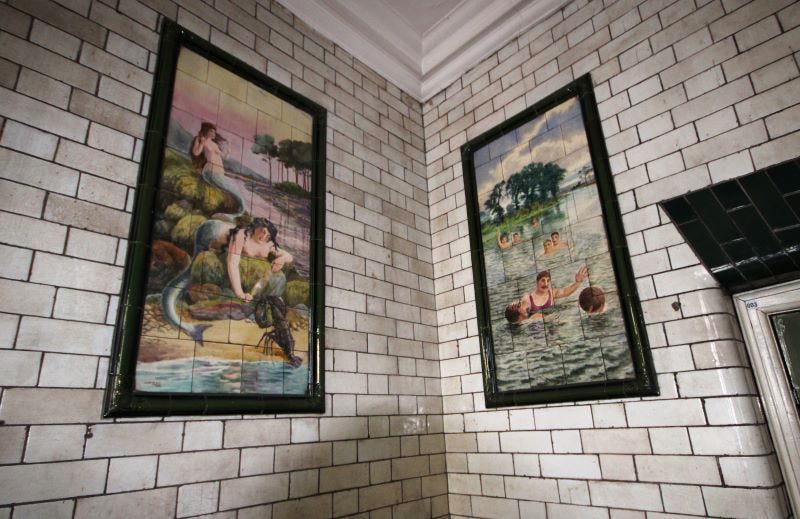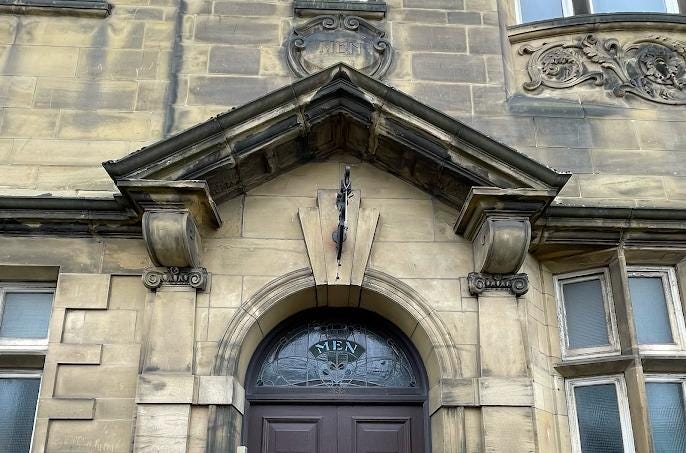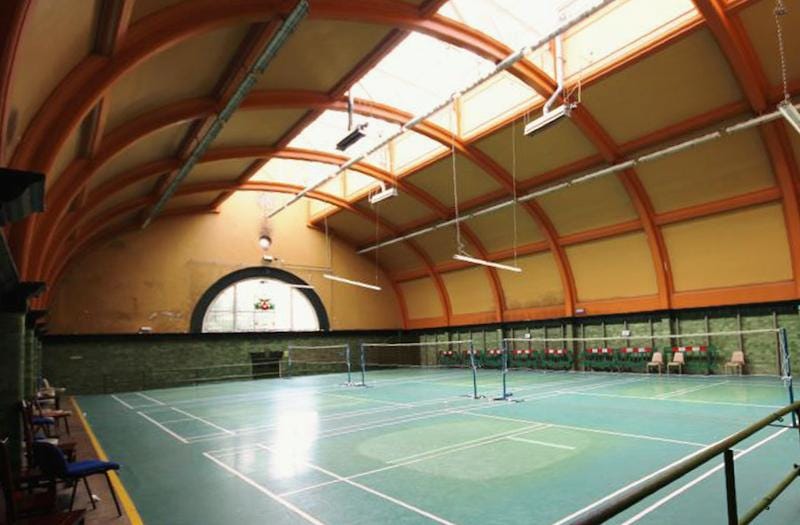Endangered Newcastle baths named among UK’s top ten at-risk buildings
Take the plunge and save city’s historic listed baths, council is urged. Tony Henderson reports
A listed “time capsule” building which offers an insight into Tyneside life more than a century ago has been placed on a national endangered Top Ten list.
The Gibson Street baths in Newcastle was opened in 1907. It included a swimming pool and, at a time when many homes lacked the provisions taken for granted today, it also provided individual slipper baths and laundry facilities.
Men and women entered through separate doors. The men’s entrance hall features four remarkable panels - two signed by the celebrated Dorset tile-makers Carter & Co depicting mermaids, and two others showing a water polo match and a diver in striped swimwear.
These have been praised by architectural historian Lynn Pearson as without parallel, even in Britain’s grandest historic baths. A fifth panel lists the 15 members of the Baths & Wash Houses Committee, as well as the architect and builders, beneath Newcastle’s coat of arms.
But the building has been disused and deteriorating for the last nine years.
This has prompted the Victorian Society to include the baths in its 2025 Top Ten league of endangered buildings.
Society president Griff Rhys Jones said: “I have lost count of the number of public bath houses that we see in decline, but people truly love these local amenities.”
The Victorian Society is urging Newcastle City Council to seek a sensitive new use for the building. Given the absence of a buyer, the Society recommends renewed collaboration with the community - offering support and extended time to develop a viable reuse proposal that preserves this valuable part of the city’s social and architectural heritage.
They issued a fundraising appeal to “find a good new integrated use for what was once a prime example of public concern and welfare and an illustration of Victorian-Edwardian values at their best.”
The rapid growth of towns and cities in the 19th and early 20th centuries left little provision for public hygiene. With disease widespread, the 1846 Public Baths and Wash-houses Act empowered local authorities to build public bathing facilities, funded via the Poor Rate.
In Newcastle, an 1845 report highlighted how working-class people were left without suitable or private places to bathe.
Costing £28,000 the baths were lavishly fitted out, with stained glass windows and green glazed brick walls. There were 23 slipper baths, and a pool measuring 75ft x 28ft.
Designed by city surveyor F H Halford, it was the first baths in Newcastle to incorporate electricity and water filtration, allowing the water to be cleaned and circulated rather than the pool being filled at the start of the week and emptied at the end.
The city’s Alderman Holmes described it as “the most complete set of baths for their size in England”. The opening ceremony was marked by a performance from Olympic swimmer Arthur 'Jack' Jarvis.
The interior pool-hall featured an arched and plastered ceiling, plus amphitheatre seating on both sides, while inside the former men’s entrance, the original turnstile and ticket windows survive.
The building has been marketed by the city council but without success. The baths were closed in 1965 and the swimming pool was boarded over, with the main hall being used for badminton courts until 2016, when the council put the building up for sale.
Campaigners Save Gibson Street Baths for People not Developers succeeded in having the building listed as an Asset of Community Value, and explored the possibility of a business and funding plan for uses such as a social enterprise hotel, cafe, bar and community space.
But the project did not come to fruition and the group posted on its Facebook page: “There is no doubt that it is an amazing building worthy of regeneration and development and that as a long serving public building it would be wonderful to see it kept in the public domain.
“However renovation costs look likely to be in the region of £2.7-3 million and this was not an achievable sum.”
A Newcastle City Council spokesperson said: “Gibson Street Baths became vacant in 2016 after it ceased as a badminton club. As we lacked the significant funding required and the expertise to refurbish it, we put it on the market a year later.
“We received several bids, and a preferred bidder was chosen but unfortunately was unable to access the funds needed to bring it back into use. It is currently wind and watertight albeit in poor condition.
“We have had numerous discussions over the years to bring the property back into use particularly with the Tyne & Wear Building Preservation Trust however due to funding issues none of these have come to fruition yet.
“We recognise this is an historically important building and want to see it saved and brought back into use and so will look to market it again in the near future.”







